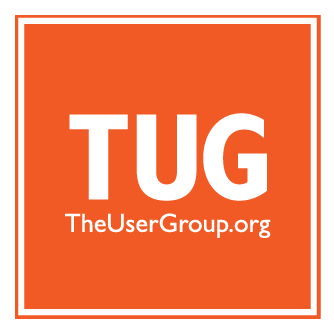NETWORK GROUPS POLICIES & PROCEDURES
1.1 Group Requirements
Each Network Group (“Group”) under TheUserGroup.org (“TUG”) umbrella must meet the following requirements to be approved as a formal entity. These requirements ensure a viable group that meets the needs of and enhances the value to TUG members. The TUG board will collaborate with Group leaders and committees to achieve these goals.
1.2 Group Name, Objective, and Purpose
Each proposed or existing Group must have a defined name, objective, and purpose. Groups may be organized around an industry, job function (e.g., Financial/Accounting), specific distribution process (e.g., Buyers, Supply Chain Management), an Infor product or partner product, or as a sub-group under a larger Group. Members of a Group must maintain current membership with TUG.
1.3 Group Steering Committee and Charters
A Group cannot be formed without a defined leader and an initial steering committee. A draft Bylaws or Charter document should be submitted to the TUG board within 60 days of Group formation and approved by the Group committee within 90 days.
The document should specify:
- Objectives and Purpose of the Group
- Target Members/Participants
- Steering Committee Roles, Term Length, and the Nomination/Voting Process
- Frequency and Form of Meetings
1.4 Group Management
Network Groups will be managed by their respective Steering Committees with the support of their members. Organizing documents must be kept current and filed with the TUG Management Company. The TUG board ensures members receive value for their investment and provides guidance and support to Group committees to foster vibrant, value-added member communities.
1.5 Infor Liaison
Each Network Group will have an Infor Liaison as an added resource. The Liaison facilitates open communication between Infor and Group leadership. Any additional resources, webinars, or commitments must be directed to TUG management for consideration. The Network leader is not to request or promise resources independently.
MEETINGS: PREPARATION AND EXECUTION
2.1 Meetings: Preparation and Execution
In-person and virtual Network Group Meetings are crucial for members. They allow for personal networking, direct interaction with key Infor contacts, idea sharing, and lobbying. Meetings also provide a forum for leadership transition and goal setting. Adequate preparation is fundamental to a meeting’s success.
2.2 Components of a Successful Network Group Meeting
- Pre-meeting surveys to determine member interests and current issues
- Development of a detailed agenda at least 30 days prior to the meeting, which can include:
- Enhancement discussions and voting
- Co-development projects
- Best practices sharing (roundtables)
- Modification and/or enhancement sharing
- Industry or application-specific topics
- Presentations from third-party solution providers or industry experts
- Learning webinar presentations to help the community learn the Infor software
2.3 Group Size and Breakouts
While staying together as a single group is beneficial up to a point, larger groups (30 or more members) may benefit from smaller breakouts for specific agenda items.
Revised January 8, 2025
